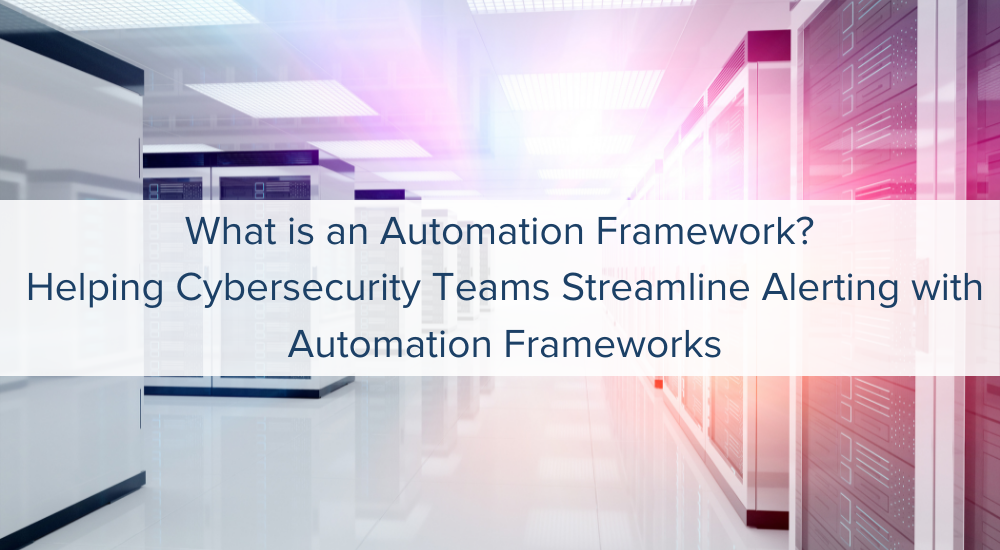
Alert fatigue is real, and your Security Operations Center (SOC) analysts are probably burning out right now. All the noise, the chaos, and the heroic firefighting efforts from one shift often spill into the next. And digging out real threats from the avalanche of bad security data is beyond frustrating for your analysts. Not only is alert fatigue debilitating to your security program, but it can also lead to poor performance, missed threats, and top security analysts quitting the profession.
And we can’t blame them. It is challenging to decipher real threats from the noise in a cycle of constant distraction and the cacophony of alerts. Despite the heroic efforts of security analysts, SOC inefficiencies will leave your organization with escalating technical debt.
Executives may think that a busy Security Operations Center (SOC) is a sign of efficiency. But the job of securing perimeters on an increasingly complex digital landscape, scattered across cloud and on-premise infrastructure is wrought with inefficiencies. The Enterprise Strategy Group reports that 75% of organizations spend equal time addressing false positives as real threats. Without additional automation and support, security analysts cannot balance the urgency of cybersecurity with the demand to improve processes.
Stop the noise with an Automation Framework.
How an Automation Framework provides Value to your Organization
Imagine a solution that could automate alert triage processes through an Automation Framework and reduce the time and resources dedicated to contextualizing alert information and deciphering the nature of each alert. Instead of disabling your security software because your team is frustrated with too many false positives—what if your alerting tools were integrated? What kind of business outcomes could you achieve if your SOC team had the space and capacity to address growth initiatives?
Why your Current Alerting Process is Inefficient
Remember when your mom asked for peace and quiet as her birthday present? And instead of giving her what she wanted, you plied her with bunches of weed bouquets from the backyard, handwritten “I’ll do a job without complaining” gift certificates (that you had zero intention of fulfilling), and then ruined her kitchen by setting off the smoke alarm while baking her a cake? Yeah—nobody’s got time for that!
Many executives try to fix cybersecurity problems by adding more tools to the system, but more tools equal more noise and more messes to clean, which will only lead to more frustration. Security analysts do not have time to run multi-channel races for insignificant alerts or alerts that do not impact their environment. They need to be able to tune out some alerts safely. They need fewer tools with better integration.
Security analysts need peace and quiet to focus on real threats, conduct meaningful evaluations, and prepare more robust defenses with contextualized alert data.
Event Management and your Alert Redundancy Problem
In cybersecurity, few tools are more valuable than an Automation Framework to solve security analyst staffing issues and enable your team to catch more threats. Using Security Information and Event Management (SIEM) system to capture and analyze operational event data is not enough. SIEMs operate in real-time and can’t prioritize or map a pattern of problem alerts. SEIMS can’t decipher false positives from real threats. SOC security analysts are bogged down looking at each alert and wasting half of their time responding to false positives. By automating the triage of alerts within a framework, alerts can be contextualized to filter real threats from the noise.
Spend the next 4 minutes with Tyler Edgett, Security Practice Manager, learning how TBConsulting’s proprietary alert Automation Framework gathers contextual information to give structure to alerting and response.
Context is Key
Contextualizing data on a sensitive and intuitive technological framework will reduce alerting noise and improve security coverage. With the right historical information and behavior patterns of an alert, security analysts can better separate the false positives from real threats.
Think about your mom again – she could correctly decipher your scream from across the street with the innate processing power of motherhood - instantly considering the level of danger you were in by the tone of your voice. Not only did she take the volume of your scream into account, but she was able to contextualize the invisible information of the event. By knowing which friends you were hanging out with, what sport you were playing, your location, and what kind of equipment you were using, she could properly gauge the magnitude of potential damage. Pain? Rage? Petrified? Gravely injured? Mom could match her response to a particular alert because she knew the nuances of the source. Mom had an always-on information security risk management framework that could correctly evaluate each event.
But security alerting can be too varied, too constant, and lack nuances informed by historical knowledge. Due to the sheer volume of alerts, it's beyond human capabilities to protect the perimeter while properly analyzing every alert coming into the network.
Implementing TBC’s Automation Framework for Continuous Security Coverage
Ready to make cybersecurity a central part of your organization to boost your business outcomes? Contact TBConsulting to enjoy all the benefits of our proprietary alert Automation Framework. With 25 years of IT experience in Phoenix and across the United States, TBC can save your SOC from alert fatigue. We will work with you to balance your security coverage with tool and software integration. Our IT Operations Center runs 24/7/365 security operations. TBC has the tools, the technology, the security controls, and certified security experts dedicated to helping our clients protect their most critical assets.
.png)


